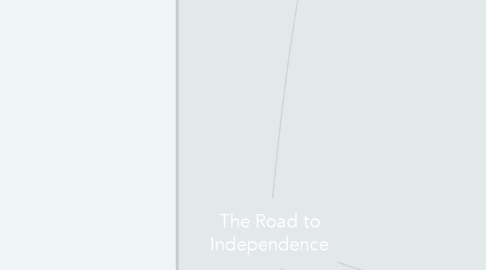
1. English War Debt: (1763-) Britain borrowed so much money for the war that they had doubled their debt.
1.1. End of Salutary Neglect: Britain owed so much money after the end of the French and Indian War, so they began to increase the taxes on the colonists.
1.2. Sugar Act: (1764) Britain realized colonists were smuggling goods. Parliament made this act to places taxes on certain goods, and allow to allow caught smugglers to be tried at a higher court.
2. The Stamp Act: (1765) This act now required colonists to buy special stamped paper for legal documents and newspapers.
2.1. Proclamation line of 1763: The British wanted to avoid any more conflicts with the Native Americans, so they forbade settlement west of the Applachians.
2.2. The Sons of Liberty: (May 1765) Colonists formed a secret resistance group to protest Britain and the Stamp Act. They harassed British stamp and customs workers and prevented and stamps from being sold.
2.2.1. The Stamp Act Congress: (October 1765) Nine colonies sent delegates to meet in NYC. They made the Declaration of Rights and Grievances which said Parliament couldn’t tax the colonies because the colonies weren’t represented in Parliament.
2.2.1.1. Declaratory Act: (1766) Parliament got rid of the Stamp Act and replaced it with the Declaratory Act which states that Parliament has the right to make laws to “bind the colonies and the people of America”.
2.2.1.1.1. Committees of Correspondence: (1772-1774) A group of colonists attacked a British customs ship that was patrolling the coast for smugglers. The ship was accidentally run aground, and then colonists burned it. King George wanted the suspects to go to Britain for the trial, so the committee was made to communicate with all the colonies to talk about violations of their rights.
2.2.1.2. Townshend Acts: (1767) The British passed a new law that allowed Parliament to put taxes on imported materials such as glass, paper, lead, and paint. There was also a three-penny tea tax.
2.2.1.2.1. Seizure of the Liberty: (June 1768) The British seized John Hancock’s ship because they thought he was involved in a smuggling act.
2.2.1.2.2. The Tea Act: (1773) This act allowed the East India Tea Company to sell tea to the colonists without any tax because the company was hit hard by the boycotts.
2.2.1.2.3. Boston Massacre: (March 5,1770) British soldiers and Colonists were always looking for extra work. On this day a fist fight broke out over jobs. In the evening a mob had gathered in front of the Customs House and they teased the guards. Five men were left dead.
2.2.2. The Battle of Lexington and Concord: (1775) General Gage ordered troops to seize weapons from the colonists, but the minutemen heard about it ahead of time. The British told the minutemen to go home, but they refused. The battle began and the British were eventually defeated.

